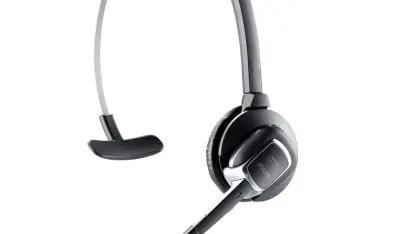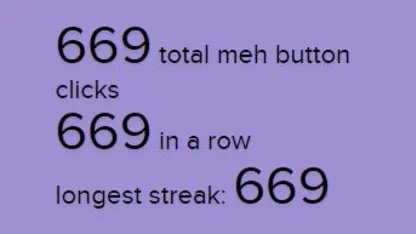Jabra Supreme Headset (Refurbished)







Our Take
- Choose the “Driver’s Edition” with the headband or the “Supreme+” you just hang over your ear- Bluetooth mono earpiece with foldaway mic, because you can’t afford to waste one of your hands on holding your phone to your ear- Noise Blackout 3.0, Active Noise Cancellation, Wind Reduction, and HD Voice so your voice doesn’t sound any more garbled than usual- Ambidextrous configuration options for the left- or right-eared- 6 hours of talk time, 15 days of standby time, car charger included: if that’s not enough for you to keep this charged, maybe you need healthier phone habits- Model: 100-99400001, 100-99400002 (hey, you know what would be fun? if we pile on a few more pointless zeroes and hyphens! here you go: 00-0000-0000-0 man what a blast)
The Mystery of the One-Eared Bandit
Ever notice something weird about Bluetooth headsets? When you’re shopping for a pair of stereo Bluetooth headphones, there are all kinds of them available for reasonably reasonable prices. You can go as low as thirty bucks and still get a half-decent pair of wireless headphones.But when you look at the one-eared kind, they’re way more expensive even though they only have half as many speakers. Professional reviewers don’t even bother reviewing lower-end Bluetooth earpieces, because they’re so obviously garbage. The Wirecutter’s “budget pick” will set you back sixty bucks.What kind of sense does that make? Why do two little Bluetooth speakers cost less than one? What kind of twisted funhouse of ghost mirrors have we stumbled into, where the fat become thin and the cheap become expensive?Because those headsets are made for calls, not just listening. So it’s not the speaker you’re paying for. It’s the mic.Specifically, it’s whatever noise-reduction technology the manufacturer has installed to make sure the person on the other end of your call can hear you. If you think about it, it’s kind of miraculous how good mics will pick up your voice without it being drowned out by the sound of the wind, or traffic, or the unearthly calliope music at that eerie haunted fairground you’re calling from.But miracles don’t come cheap. If you want technology like Noise Blackout 3.0 with Active Noise Cancellation and Wind Reduction crammed into the tiny space of a Bluetooth earpiece, you should be prepared to pay a bit more than you would for some generic cans to pipe Spotify through.Unless, of course, you’re a customer here, where everything is turned on its head and nothing is as it seems and really good Bluetooth earpieces cost about what you’d expect to pay for a decent pair of Bluetooth headphones anywhere else. We like to think we’re like some kind of spooky abandoned amusement park, but in a good way.










